#tomohiko sagae
Explore tagged Tumblr posts
Text
Koei Warriors Retrospective Part 12: Dynasty Warriors 6


Dynasty Warriors 6 (真・三國無双5) Platforms: PlayStation 3, Xbox 360, PC Release dates: Japan: 11 November 2007 (PS3/Xbox 360)/11 July 2008 (PC) USA: 19 February 2008 (PS3/Xbox 360)/18 November 2008 (PC) Europe: 7 March 2008 (PS3/Xbox 360)/10 October 2008 (PC)
"How many times have I told you to make her feel welcome? No, I don't care if you didn't know she was a Reverend Mother of the Bene Gesserit. Did you learn nothing from the Kwisatz Haderach saga? Consider yourself fired."
Oh, hello. Sorry, had a bit of trouble with one of my businesses there. With Koei Tecmo moving onto the PlayStation 3, this begins what I like to call the modern era of Warriors games. However, as I mentioned in the last instalment, there was a transitionary period beginning with DW5 Special and ending with Warriors Orochi Z, and this game, Dynasty Warriors 6, is smack bang in the middle of it.
Apparently, this game is controversial among the fandom to the point that they call it the worst game of the franchise (up to this point, anyway). But was it really the worst game in my eyes? Let's find out.
Dynasty Warriors 6
Where should I begin with this game? Right, the cuts.
If you haven't noticed in the Dynasty Warriors instalments so far, I've been adding in comments from tweets made by game designer Tomohiko Shō, who has worked on the games from the beginning to this one and has been the lead planner since DW2, taking on the role of director in DW6 before he was diverted out of the team. Since June this year, Shō has been giving insights into his work on the classic era DW games and the mechanics within them in preparation for the release of Dynasty Warriors Origins, and they have served as interesting material for this series.
According to Shō, there were three main challenges to making a sequel on the same lines of DW5, namely the increase in characters, the increase in battles, and the repetition of the same stories. Ultimately, the decision was made to reduce characters and battles in an effort to develop a next-generation battle design that would create the foundation for the realism (臨場感) of future battlefields. This would allow them to begin developing challenging battles on larger maps while continuing to explore major characters in depth.
As such, 8 characters ended up being cut from the game, namely Pang De, Daqiao, Jiang Wei, Xingcai, Meng Huo, Zhurong and Zuo Ci. For each kingdom, five characters (and two from Other) were given Musou Modes of six stages as follows:
Wei
Xiahou Dun
Dian Wei
Sima Yi
Zhang Liao
Cao Cao
Wu
Zhou Yu
Lu Xun
Sun Shangxiang
Gan Ning
Sun Jian
Shu
Zhao Yun
Guan Yu
Zhang Fei
Zhuge Liang
Liu Bei
Other
Diaochan
Lu Bu
Yes, that means Cao Cao and Liu Bei end up cheating death again to appear at the Wuzhang Plains (and not just as a character exclusive thing like in DW5). At least Sun Jian only goes up to Hefei and Fan Castle. Interestingly, the final stage in Sima Yi's Musou Mode has him lead a portion of the Wei forces against Cao Cao, which serves as foreshadowing for a new faction to be featured in the next game (that was also teased in WO2).
Unfortunately, these lineup changes also means that the entire Dynasty Warriors character lineup is fucked up for future games. In this game, each of the kingdom's five characters that have Musou Modes are listed first in the character lineups, with all the other characters listed after that. But even then, Koei ended up going out of their way to fuck up the order of the other characters as well. In Wei, Zhenji is listed last after Cao Ren and Cao Pi. In Wu, Zhou Tai and Ling Tong are moved up to between Huang Gai and Sun Ce before Sun Quan and Xiaoqiao come after. In Shu, Guan Ping is listed between Wei Yan and Pang Tong.
The reason why the characters were listed the way they were is because they were ordered by their debut game orders. When cut characters came back in future games, they were placed at the end of the DW6 lineups and it kept building up from there. The kingdoms are now ordered so that Shu is third after Wei and Wu when they were listed before them up to Warriors Orochi, but I don't mind it as much. I know this may seem like a small thing in the grand scheme of things, but I am someone who believes in consistency, much to the point that when I did the Dynasty Warriors Weapon Moveset Power Rankings, I ordered the movesets by the debut order of their EX characters, aka the true order. At least the Other characters haven't been touched much by virtue of Meng Huo, Zhurong and Zuo Ci being at the end of the lineup.
Each character has gone through a radical redesign compared to DW5, whether in their appearances or the weapons they use. Notable examples of appearance changes include Liu Bei, Sun Quan, Cao Pi and Dong Zhuo. As for weapon changes, Liu Bei uses twin swords instead of a single one, Zhang Liao uses twin axes instead of a pole blade, Zhou Yu uses a pole instead of his iron sword, and Diaochan uses a chain whip instead of her twin maces among others. Other characters like Xiahou Dun (Scimitar > Cudgel), Dian Wei (Axe > Morning Star), Gan Ning (Pirate Sword > Dual Daggers) and Lu Bu (Halberd > Crossed Pike) have received weapon changes that would be reversed in future games.
In fact, the only really unique characters are those that have Musou Modes while the other characters share weapon movesets with each other. Ma Chao still has his spear, but he shares it with Taishi Ci, Sun Ce and fucking Zhang He (!). Lu Meng continues to use a pike, which is also shared with Guan Ping, Ling Tong, Cao Ren and Xu Huang. The sword, as used by Sun Quan, Cao Pi and Yuan Shao, is different to the blade as used by Zhou Tai, Xiahou Yuan and Huang Zhong. Characters using clubs include Wei Yan, Huang Gai, Xu Zhu and Dong Zhuo, Sun Shangxiang shares her bow with Yueying, Zhang Jiao shares his staff with Pang Tong and Diaochan shares her chain whip with Zhen Ji. The only remaining unique character with no story mode is Xiaoqiao, who continues to use the paired fans.
The layout of Free Mode is similar to that of DW5, but many stages have more than two scenarios mostly due to Diaochan and Lu Bu's stories or because some characters have exclusive versions of scenarios (eg. the Wu scenarios for Jing Province, Hefei and Fan Castle have exclusive versions for Sun Jian). A couple of new battles, namely Invasion of Xuchang (featuring Sun Ce) and Battle of Hanzhong make their debut in this game, but for the most part, the battles are the same as in previous games.
Stage difficulties are the same as in DW5, but there is an extra difficulty between Hard and Chaos known as Master. Master and Chaos difficulties are unlocked by completing Musou Modes. Like in DW5, the number of interim saves is also limited based on the difficulty, with Master difficulty giving you one save like the Hard difficulty.
There are five challenges available in Challenge Mode; Rampage and Sudden Death return from DW5, then Speed Run has you run a course of eight bases around Chengdu, Havoc has you destroying as many items as possible around Chibi, and Gauntlet has you dodging horses as you gather EXP.
The Camp section has received a little retune from previous games. Aside from looking at your character's model, stats, weapons and horses, the Musou Mode movies (for characters that have them) can be seen here. When you max out your character to level 50, you'll also unlock the voice gallery, something that was exclusive to the Empires games.
Some new elements have been added to the Encyclopedia as well; aside from the history overview and officer biographies, there is also a battle biography of all stages featured in the game, a glossary of terms and sayings and a timeline of military and political happenings along with births and deaths. Related entries can be viewed as well. This would be the standard for future Dynasty Warriors games.
Dynasty Warriors 6 changed the battle mechanics for the first time after the existing system was in use for 7 years. According to Tomohiko Shō, the existing Charge Attack system that had been adapted from fighting games wasn't designed to be an instant quick-thinking system as you had to think in advance about what attack you wanted to perform, hence why they designed to change it.
The new battle system is known as the Renbu (chain) system. It consists of a Normal Attack string, a Power Attack string and a strong Power Attack. The Power Attacks replace the Charge Attacks from previous games even though I'll probably keep referring to them as such. Pressing Triangle performs the Power Attack string and holding Triangle performs the strong Power Attack.
The amount of attacks you can perform (and their efficacy) is determined by the ranking Renbu Gauge to the left of your character portrait in the HUD, ranging from ranks 1 to 3 and infinity. Rank 1 starts you off with a 4-chain Normal Attack and 2-chain Power Attack, while the infinity rank gives you a 16-chain Normal Attack and 5-chain Power Attack. Initially you can only charge the Renbu Gauge up to the second rank, but as you level up, you can upgrade yourself and unlock the ability to charge up to the third rank and infinity, or you can pick up some beads (a new item) that will give you infinite Renbu for 30 seconds. Attacking enemies will charge the gauge and bring up your Renbu rank, while being attacked will cause it to fall, sometimes significantly if you're hit with a strong enough attack.
Jump Attacks and Dash Attacks remain the same as with previous games, but this game also introduces a strong Dash Attack performed by pressing Triangle while running. If you are caught in a weapon deadlock and you max out your side of the gauge, you can perform a Deadlock Attack on the enemy like in Samurai Warriors. Evasion somersaults and horse jumping are also elements implemented from Samurai Warriors.
Grapple Attacks are a new introduction to this game, reintroducing the concept of targeted attacks to Dynasty Warriors characters after they were cut in 5. While guarding, you can press Square or Triangle to grab an enemy and perform an attack against them. This is different to parrying and counterattacking, which also continues in this game when you press Square or Triangle after guarding an enemy attack, which is better timing than in previous games. The parry is just a simple knockback that is new to this game, while the counterattack is similar to how parrying was implemented in previous games.
Musou Attacks now consist of a Normal Attack loop followed by the finisher, which seems kind of bland seeing as the Musou loops in previous games were actually different.
By picking up the book-like Tomes on the battlefield, you can press L2 (L + R on the PSP port) to unleash one of five Special Attacks that are different between each character (also replacing the bow attacks of the classic era). These Special Attacks are True Speed (performing special attacks while running at sanic speed), Swift Attack which should really be named Overwhelm (infinite Renbu and increased resistance to enemy attacks), Volley (rain down arrows around you), Fire (trigger flaming pillars that can also set bases on fire) and Rockfall (rain down boulders that can roll depending on your terrain). Initially you are only able to have one Tome in stock but you can upgrade yourself to have three. Enemy officers are also capable of using Special Attacks as well.
In summary, the Renbu system is designed to allow you to transition between Normal Attacks and Power Attacks and cancel them with guards and evasions. It's alright for what it is, but to me it makes the button-pressing experience a bit of an unintentional pisstake, particularly with the Normal Attack string. At least the transition between Normal and Power Attacks feels seamless even with the windup to the Power Attack that can leave you open to enemy attacks.
With a horse equipped, you can press the down button to summon it, a feature adapted from Warriors Orochi that had roots in SW2. On horseback, you can jump your horse by pressing R1, a distinct contrast to the Samurai Warriors implementation that also allows you to perform a Power Attack on horseback.
Weapons are divided into three types, namely Standard, Strength and Skill, with each type providing different effects the higher your Renbu rank; Standard weapons increase attack range, Strength weapons increase attack strength and Skill weapons increase attack speed. Weapons can have an element of either Fire, Ice and Lightning and can have up to five of ten effect attributes, among them Air Wave and True Musou. Up to eight weapons can be kept per character.
Horses can be picked up in battle and levelled up like bodyguards in DW5, with up to eight horses able to be kept. Each horse will have a randomly generated name (that sometimes doesn't match the mane colour) and an evaluation rating shown by the blurb on each horse. As you level up your horse to a maximum of 5, its abilities will increase and it will also gain an element and up to four abilities. It is also this way that you can raise rare horses to have the same abilities as Hex Mark, Shadow Runner or Red Hare. Let me explain.
To get these abilities, your horse needs to have the blurb "His eyes consider the world and has a heavenly physique." Horses come in six colours, namely chestnut brown, dark bay brown, bay brown, grey, black or red. For each colour horse that has the stated blurb, there is a chance (meaning that it isn't guaranteed) that it will become a King horse at level 5.
Chestnut brown horses gain the title Auburn King and the ability Steel Hoof, preventing your horse from rearing up when trampling enemies (kind of a redundant ability considering the other horses but still)
Dark bay brown horses gain the title Ebon(y) King and the ability Jagged Hoof, which increases damage as you trample enemies
Bay brown horses gain the title Dapple King and the ability Winged Hoof, which allows your horse to create a shockwave upon landing a jump
Grey horses gain the title Grey King (also known as Hex Mark King 的盧王) and the ability Water Spirit, which allows your horse to swim faster in deep water (Special changes this to Karmic Spirit, increasing your luck of finding good weapons or horses)
Black horses gain the title Shadow Runner King and the ability Stone Spirit, allowing your horse to withstand heavy damage while mounted without falling off
Red horses gain the title Red Hare King and the ability Wind Spirit, making your horse run as fast as Red Hare
This has got to the the worst method of gaining rare horses because as rare as you get a horse that has the stated blurb, you're not even guaranteed to gain a King horse anyway. Players have tried tricks to gain and raise King horses, such as changing the system time (at least on PlayStations anyway) to a specific parameter and going through the steps as quickly as possible in the hope of gaining a potential rare horse, then when their EXP is just about to max out, if it doesn't become a rare horse at level 5, they reset the console and start again (interim saves don't help). Oh, but I suppose this adds to the rarity of it, ay? Anyway, tips are available on the Japanese wikis and GameFAQs.
(In the Japanese and Chinese versions, horse titles are always [colour][element] King with an 王 at the end, so frankly the English version denotes King horses better.)
Each stage has three target objectives that when completed, allow you to gain a weapon and a certain amount of EXP. Certain objectives are also the key to unlocking non-Musou Mode characters for use in Free Mode and Challenge Mode.
Some stages can have a third-party enemy army like in Samurai Warriors, but that is largely limited to the Wu Territory (Wujun) and Lu Bu's stages. Players are listed separately at the top of the Unit Info list and not under army commanders. Officers can have up to five subofficers (that are not locatable) and those subofficers can sometimes split off into their own units. In later games, all officers would be listed separately without subofficers.
An interesting addition to the Battle Log is the inclusion of battle dialogue. A point of contention among fans of Warriors games is the apparent capability to read the messages and dialogue that appears on the screen, and for some toxic fanboys, it's become an excuse to justify Koei Tecmo not dubbing their later games. Look, I will say that while it's nice to include dialogue in the battle log so players can review it, this isn't an excuse for toxic fanboys to dismiss players being unable to read fast enough as an ableist "skill issue". Similar functionality would be seen in SW Chronicles, SW4 (the entire series), DW Godseekers, DW9 and WO4, with later games also allowing lines to be replayed (regardless of voice options).
Battlefields have received a revamp compared to previous games. You can swim in the water, ambush enemies from cliffs and climb up and down ladders. In fact, the latter is a core functionality of siege battles, which take place in battles with large castles. When you approach a castle gate (that can't be broken down normally though it has been possible), engineer units will begin setting up catapults, rams and ladders while arbalests (ballistae) and rock throwers will defend the gate from atop the castle walls. If you are attacking the castle, you can climb up the ladders and destroy the arbalests, but if you are defending the castle, you have to defeat all enemy officers outside the gates to make them give up on the siege. You can destroy the siege weapons, but they will keep being rebuilt until the siege battle ends.
Interestingly, at the Battle of Chibi, there are gongs on three of the boats that will allow them to move when they are hit. There's another boat that Cao Cao and some of his officers will escape to when the fire attack succeeds, which is probably the only thing that remains of the Escape to Chibi scenario.
Bases make appearances again in this battle, but checkpoints (strongholds) with guard captains are no longer a thing from this point in DW. Among the types of bases include main camps, forts, gates and watchposts, also known as archer bases. For the first three types, you attack the gates to break through them and defeat enemies to decrease the base's morale/durability until it gets to zero, at which point the base will belong to your forces. Defeating corporals reduce the morale by 20 apiece, then once the number gets under 100, defeating the base's guard captain will occupy the base. Officers can enter their sides' bases to increase their morale. The morale of watchposts is 15, but only defeating the archers will count; in this case, the only way that defeating soldiers can affect the morale is if they're under an officer. Recovery items can be obtained from allied bases.
Duels make somewhat of a return in this game. While fighting an enemy officer, a gong may sound and soldiers will surround the two of you, attacking anyone who comes near them. Other officers may enter the ring as well.
This game is the first game to count hit chains involving all enemies you hit instead of combo chains involving you hitting the same enemy multiple times. With the exception of DW7, this would be the norm for future Warriors games.
At the end of each battle, there is a skill tree where you can unlock skills based on how many levels you went up by (which, for the first time, follows the SW/WO system instead of the old rank system). Aside from upgrading your stats, this is where you also upgrade your maximum Renbu level and the number of Tomes you can hold (plus also having one at the start of a battle).
In terms of localisation, I did mention in the last instalment for Warriors Orochi that this was the middle of a transition in English voice actors, with some characters being recast in addition to their redesign. Zhou Yu and Gan Ning's voice actors are changed from Michael Gough/Michael Forest and Doug Stone (who continues to voice Xu Zhu and Zhang Jiao) respectively to Michael Sinterniklaas, who voiced Taigong Wang in WO. Liu Bei's voice actor is changed from Dan Woren to Dave B. Mitchell, who has voiced Guan Yu since WO, and Sima Yi's voice actor is changed from Richard Cansino (who continues to voice Pang Tong) to Kyle Herbert. Lee Everest, who also voiced Huang Gai, has been fully integrated as the English narrator for Warriors games after only being heard at the end of Musou Modes in DW5.
Additionally, Voicegroup has been making the effort to begin properly pronouncing certain Chinese names properly since WO. Gone are the days of "Cow Cow" and "Cow Pee" in favour of "Tsao Tsao" and "Tsao Pee". These efforts would continue along with the status quo in future games.
Also, in the Chinese version, the text uses a font that is rather reminiscent of the old-style seal script (篆書) or clerical script (隸書) styles. This font would continue to be used up to the DW8E and even in WO3. A similar font is also seen in the Japanese version, but it's only used in the DW6 series.
Dynasty Warriors 6 Special


Dynasty Warriors 6 Special (真・三國無双5 Special) Platforms: PlayStation 2, PlayStation Portable Release dates: Japan: 2 October 2008 (PS2)/17 September 2009 (PSP) USA: 18 November 2008 (PS2)
For the first time since 2, Dynasty Warriors 6 does not have an Xtreme Legends expansion. Instead, it was backported to the PS2 and released as a "Special" port before later being ported to the PSP.
When DW6 was released, only 1 million PS3s had been sold in Japan and there were calls for it to be ported to the PS2. In all honesty, with the higher launch price of the PS3 compared to the PS2 (even with inflation taken into account), not to mention the global financial crisis of 2008, it's easy to see why PS3 sales would be slow, particularly towards kids my age. As user Jon-Slow said, "It was not a console a child could buy or ask for".
Like seriously, back then, my cousin got a PS3 and Nintendo Wii while I was stuck with my PS2 and PSP (keep in mind that even without buying physical copies of games, "digital versions" were hard to come by particularly because my family's internet allowance was 10GB before it slowed to fucking dialup speeds). I did get a Nintendo Wii later, but I regretfully traded it in for a Wii U some years later instead of getting a PS3 or PS4. I doubt my parents would have been willing to spend the money anyway.
So yeah, because of the sales figures and the pricing of the PS3, Dynasty Warriors 6 got backported to an older (and cheaper) console with some of the improvements normally seen in Xtreme Legends. DLC for this game wasn't on Koei's mind back then otherwise provision would have been made for it. Also, this game didn't have the "Special" moniker when it was released in the West, which I think would confuse people into thinking that the PS2 version is the same when it isn't, but then again even an idiot would realise that the PS2 doesn't support widescreen and has less graphics capabilities compared to the PS3.
The main thing is that six additional characters have been decloned and given unique weapons and new Musou Modes (which are available from the beginning). These characters are Zhang He (who gets his claws back), Cao Pi, Taishi Ci (who also gets his twin rods back), Ling Tong, Ma Chao and Yueying. Amidst these new Musou Modes, five new stages have been added, with some notable inclusions being the Battle of Jiangdong (which is separate from the existing Battle of the Wu Territory) and Struggle at Hebei (which is where you finish off Yuan Shao after his army was defeated at Guandu).
Other changes have been made to suit the reduced graphics capabilities of the PS2. Swimming is one element that has been removed; some deep water areas have been made shallow or inaccessible, most notably in Fan Castle where the floodwaters are shallow or in Chibi where the gongs to move ships have also been removed. Duels have been removed and replaced with highlight battles akin to DW5.
In Japan, this game was released over two discs, with Disc 1 containing the Musou Modes for Wei and Wu characters (excluding Gan Ning and Sun Jian) and Disc 2 containing the Musou Modes for Shu and Other characters along with Gan Ning and Sun Jian. In the USA, the game was released on a dual-layer disc, which again caused issues on some PS2s like SW2XL did.
Even without considering the discs though, players have experienced issues that somewhat affect the gameplay experience. The game has been known to lag, controller inputs may not be read correctly and enemies are prone to disappear and reappear. The latter issue causes some powerful soldiers to become stealthy, where they will come out of nowhere and attack you before disappearing again.
The PSP port is more optimised compared to (what I've heard about) the PS2 port and is also the port I've been playing DW6 on for over a decade. It was also the time when I made the rookie mistake of assuming that this was DW5 (because this is Shin Sangoku Musou 5), so I ended up playing a different game to what I was expecting.
Meng Huo is also added in the PSP port after making a return in Empires, appearing with the Shu forces at Hanzhong, Jieting and the Wuzhang Plains. Character selection lines have been added when selecting characters in Musou Mode, the lines being taken from the PS3 port of Strikeforce. While the PSP port omits encounter, defeat and praise lines from being heard when played by itself, installing data to the Memory Stick and enabling data to be loaded from it allows those lines to be voiced, making this the first PSP port of a Warriors game to be fully voiced. Loading times are also shortened but they were fast enough as they were already.
The PS2 version might work better if played on an emulator, but otherwise, you can play the PSP version as it is better and less buggy.
Rant: The Koei Tecmo Merger
Around this generation of Warriors games, you may begin to notice a change in the opening logos of the games, most particularly the Koei logo changing to the Koei Tecmo (KT) logo. From 2008 to 2010, the two companies Tecmo and Koei merged to form Tecmo Koei Holdings and their subsidiaries were rebranded and restructured before Tecmo was declared disbanded. In 2014, the company's name was renamed to Koei Tecmo to better represent the ordering in their logo and in 2016, another company restructure led to the Tecmo brand name being abandoned for good. But what were the circumstances behind the merger and how did it contribute to Koei Tecmo's later "budgetary limitations"?
On 1 January 2006, Tecmo's president Junji Nakamura announced his resignation from the company, naming Yoshimi Yasuda his successor. Later that year in September, a former female employee filed a lawsuit against Tecmo and Tomonobu Itagaki, senior executive officer and head of Team Ninja, claiming that Itagaki sexually harassed her and that after she lodged a complaint with the company, was demoted and had her salary reduced to the point where she was essentially forced to quit. Tecmo stated that Itagaki, the female employee and their associates mixed their private and work matters, causing trouble within the company and as a result, all of them were demoted and had their salaries reduced.
In December 2007, the Tokyo District Court ruled that Itagaki did not commit sexual harassment, which was appealed by the female employee. Throughout the first half of 2008, Itagaki was demoted from being an executive officer to a creative officer before the Tokyo High Court dismissed the employee's lawsuit in May. Tecmo would acknowledge that socially unacceptable behaviour had taken place, but stood by Itagaki's actions not constituting sexual harassment.
Around the same time, Tomonobu Itagaki filed a lawsuit against Tecmo and president Yoshimi Yasuda for 148 million yen while also announcing his resignation on 1 July 2008. In his statement to the media, which was also translated into English on his request, Itagaki claimed that he was owed completion bonuses and was also suffering emotional distress due to disparaging statements from Yasuda. Itagaki was fired by Tecmo two weeks before his planned resignation and as a result, he raised his claim to 164 million yen, the raise reflecting what he should have earned had he been allowed to resign as planned.
Around the same time again, two Tecmo union executives, representing all 300 employees, filed a lawsuit against the company for 8.3 million yen in unpaid overtime pay (over two years as per the statute of limitations), the staff having been illegally moved to a "flexible hours" system in 2004 that apparently justified Tecmo not paying them for overtime. Yoshimi Yasuda resigned as president at the end of August 2008 for "personal reasons" and the lawsuit with the union executives was settled soon after. By March 2009, Tecmo's labour union became defunct after all their members resigned following the settlement. Itagaki's lawsuit with Tecmo would be settled in February 2010. The terms for both settlements were not made public.
On a side note, former president Junji Nakamura also filed a lawsuit in February 2007, seeking nearly 170 million yen in retirement benefits (severance pay). According to an online comment from a former employee of the company (made 21 June 2008 under this article), this was after Tecmo's board of directors apparently decided to not to pay him any retirement benefits after Nakamura was found to have embezzled company funds, likely meaning that Nakamura was actually fired, but former chairman and founder Yoshihito Kakihara took consideration on him and allowed him to resign so he wouldn't be marked with the shame of being fired. Take this with a grain of salt.
These lawsuits caused significant turmoil in the company and created a golden opportunity for takeover bids. Following Yasuda's resignation in August 2008, Square Enix announced a takeover bid for Tecmo, giving them a week to consider their offer. On 4 September 2008, Tecmo declined the tender offer and instead announced their decision to merge with Koei, citing close relationships between the founders' families at the heart of their decision. The merger was finalised on 1 April 2009.
Given Tecmo's damaged reputation at the time and Koei spending money on the merger along with rebranding and restructuring, I believe that the merger is one reason for the "budget issues" fans would speculate in later years. The Warriors games being a niche franchise certainly didn't help things either.
Dynasty Warriors 6 is part of a bridge between the classic and modern eras of Warriors games. The structure and format plays the same as the classic era, but the changes in aesthetics, designs and weapons paved the way for what we would see in the modern era. The Renbu system wasn't that well received because it took the piss out of button mashing, but I didn't feel that much of a difference between this and DW5. While I do understand why people don't like this game, I actually don't think it was that bad looking back at it, especially compared to what would come much later with DW9.
The transition between the classic and modern eras concludes with the spinoffs for DW6, Empires and Strikeforce/Multi Raid.
Azuma came into the office with two manilla folders. "Alec, Shanna, I need your help to research something for me. Everything you'll need is in these folders."
Alec and Shanna took a folder each and read through them. They were surprised at what Azuma was asking of them.
"My lord, are you seriously asking us to work with the Kwisatz Haderach for this?" questioned Alec.
"Yes. He's the only person I can think of who should have the resources for me to get a proper and detailed answer."
"Wouldn't you owe a favour to him regardless of whether you get the answers you needed or not?" asked Shanna.
"I've been on the Kwisatz Haderach's beck and call for nearly a year now, so surely I'm owed something from him. It was hard mustering up the courage to ask him for help, but he was happy to offer it. Look, I just want to find answers that are different to what I've already known because surely I have to be incorrect or misinformed about something. If you guys can do this, I'll make it worth your while. So how about it?"
"Understood, my lord," said Alec and Shanna.
What was the topic Azuma wanted the Tandy Computer Whiz Kids to research? The answer will be revealed in due time...
0 notes
Text
Dynasty Warriors: Origins, Tomohiko Sho di Omega Force spiega la rivoluzione della serie
Dynasty Warriors: Origins, Tomohiko Sho di Omega Force spiega la rivoluzione della serie Al Tokyo Game Show abbiamo intervistato Sho san, lo storico producer della saga di Koei Tecmo che è tornato al timone in occasione dell’ultimo capitolo, Dynasty Warriors: Origins. Powered by WPeMatico Al Tokyo Game Show abbiamo intervistato Sho san, lo storico producer della saga di Koei Tecmo che è tornato…
0 notes
Text
faktoria Bandcamp label 031/faktoria CD004 Junji Ono a.k.a. NOISECONCRETE "深夜テクノ Late Night Techno"



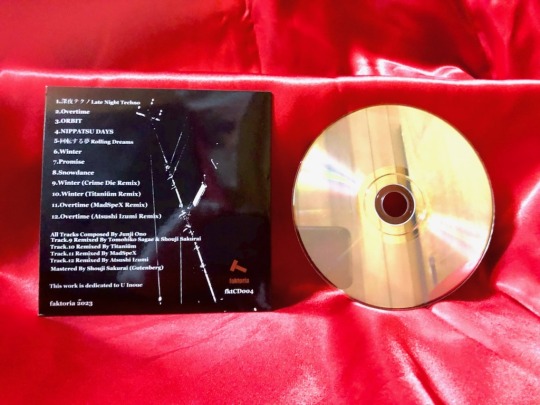
faktoria Bamdcamp label No.31 and faktoria label's CD No.4 is Junji Ono a.k.a. NOISECONCRETE "深夜テクノ Late Night Techno". Junji Ono is an artist based in Aichi, Japan. His main solo project is extreme noise sound "NOISECONCRETE", The most famous current project is "NOISECONCRETE × 3CHI5" with Vocal/Voice performer 3CHI5, He previously participated as the frontman of the Grindcore band "Gang up on Against", Other activities include participation in bands such as "kocher" and "skulls", Many more sessions and more… He has developed an energetic live performance/release. This album is Different from his hardcore/extreme public image, Contains intelligent Experimental Techno~Beat Music. This release under his real name reflects one of his many sensibilities. This album is contained Original 8 tracks + 4 remix. Remixer is … Atsushi Izumi(Opal Tapes) from Osaka Crime Die[member of Tomohiko Sagae(HANDS/Rodz-Konez) +Gutenberg(ant-zen/faktoria)] MadSpeX [member of MadM + spanner speX] from Aichi Titaniüm from Aichi ■ ■ ■ Junji Ono a.k.a. NOISECONCRETE / 深夜テクノ Late Night Techno 01 深夜テクノ Late Night Techno 02 Overtime 03 ORBIT 04 NIPPATSU DAYS 05 回転する夢 Rolling Dreams 06 Winter 07 Promise 08 Snowdance 09 Winter (Crime Die Remix) 10 Winter (Titaniüm remix) 11 Overtime (MadSpex Remix) 12 Overtime (Atsushi Izumi Remix) ■ ■ ■ Album prevew:
Trailer Movie ( By VJ HIDE):
■ This Album(CD/Digital) will be out at 25th Dec 2023. Sold faktoria's Bandcamp and some shops(site) in Japan: faktoria's BC:
Some shops(Site) in Japan:
ANOKTHUS BASE:
■ ■ ■ ■ faktoria Bandcampレーベル第31作目にして レーベルCD作品の4枚目は Junji Ono a.k.a. NOISECONCRETEによるアルバム "深夜テクノ Late Night Techno"。 オノジュンジは日本は愛知を拠点に活動するアーティスト。 Extreme Noise Sound等を展開する メインソロプロジェクト"NOISECONCRETE"、 そして現行の最も有名なプロジェクトが Vocal/Voiceパフォーマー3CHI5とのユニット "NOISECONCRETE × 3CHI5"、 またそれ以前よりフロントマンとして参加している Grindcore Band"Gang up on Against"、 他kocher、skulls等のバンドへの参加から 多数のセッション等精力的な ライブ活動/リリースを展開している。 今回のfaktoriaからのアルバムは 彼のハードコア/エクストリームといった パブリックイメージとは異なる インテリジェンスな Experimental Techno~Beat Musicを収録している。 この本名名義でのリリースは彼の内の多々ある感性の1つが 現れたものといえるだろう。 オリジナル8曲加え、リミキサーとして Opal TapesやThrènesからアルバム、EPをリリースし、 他国内外の多々のレーベルのコンピレーションに参加している 大阪の"Atsushi Izumi"、 山形のTomohiko SagaeとGutenbergの2人が 昨年からスタートしたユニット"Crime Die"、 MadMとspanner speXの二人による エレクトロダンスプロジェクト"MadSpeX"、 名古屋を拠点にRitual、Tribal、Darksoundを軸とした DJ/トラックメイカーとして活躍している"Titaniüm"、 この4組が参加。 リリースはCD/Digitalともに2023/12/25リリース。 Digitalはfaktoria Bandcampにて。 CDは上記のBCでの通販他、 幾つかのショップ/サイトで委託にて取り扱��予定。
0 notes
Text
MACHINERHYSM Feb 12 2023
『MACHINERHYSM』

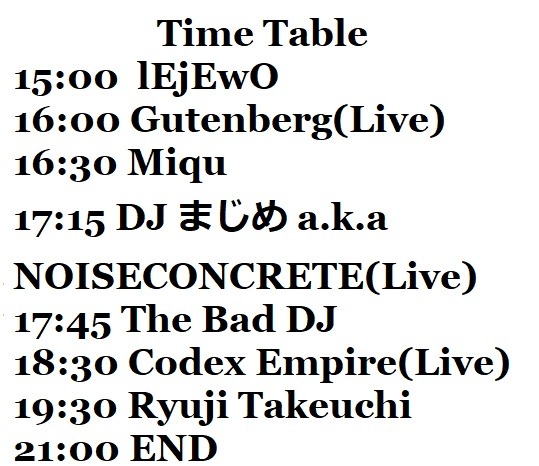
2023/2/12(SUN)15:00~ at club about B1,4-13-3,Sakae,Naka-ku,Nagoya Aichi 460-0008 Japan https://club-about.com/index.html https://twitter.com/club_about https://www.facebook.com/about.nagoya Charge:2,500yen LIVE: Codex Empire (aufnahme+wiedergabe,Sacred Court|UK) DJ まじめ a.k.a NOISECONCRETE Gutenberg (ant-zen,faktoria) DJ: Ryuji Takeuchi (Local Sound Network, Hue Helix) The Bad DJ(Unusual Way/破壊硬戦) Miqu lEjEwO VJ: Yum MACHINE + RHYTHM + ISM = MACHINERHYSM(マシナリズム) 名古屋のIndustrial Musicを軸としたEvent/Labelである “faktoria”の暖簾分けしたサブイベントとして 誕生したMachine/Industrial Music Event “MACHINERHYSM”。 第2回目となる今回は 90年代初頭からIndustrial/Experimentalバンド ”Konstruktivists”のメンバーとして、 また多々のソロ/サイドプロジェクトにて活動を続けてきた ウィーンを拠点とするアーティストMahk Rumbaeによる ダークでパワフルなテクノプロジェクトCodex EmpireがLIVEで、 00年代からその時代時代に適応しつつも 一貫したハード&ストイックなスタイルをブレなく提示し続け、 現行のHard Techno/Industrial Technoシーンにおいても 常に一目置かれている存在である大阪のRyuji TakeuchiがDJで出演。 またローカルキャストには 日本にとどまらず世界的にも注目が高まってきている2人組 NOISECONCRETE × 3CHI5 の NOISECONCRETEによる ソロマシンライブ名義 DJ まじめ、 faktoria関係にはイベント/レーベル共に縁のある 真のHardcoreスピリット求道者The Bad DJ、 名古屋の新世代DJ Collective “NEUMA”の一員である DeepでHeavyなプレイが光る Miquが其々LIVE/DJで出演。 faktoriaメンバーからは前回に引き続きGuteberg、Yumに加え faktoriaスタートメンバーであるlEjEwOが出演。 faktoria第1回目開催の場所であるclub aboutにて クラブスタイルの初期形態にて 機械的律動主義を実行する。 Codex Empire (aufnahme+wiedergabe,Sacred Court,Horo | UK)

British born, Vienna based producer Mahk Rumbae has been creating challenging experimental electronic music since 1990 as one half of industrial/experimental band Konstruktivists as well as numerous solo and side-projects.
Since 2014, Codex Empire has built an international reputation for dark and intense techno productions and live shows. Combining this background in dark electronic music with heavy rhythmic elements makes Codex Empire an intense and simultaneously danceable experience both live and on record.
side-project antechamber is an outlet for less dancefloor orientated, dark, intense rhythmic music. Web Site: http://www.codexempire.com/ Soundcloud: https://soundcloud.com/codexempire Facebook: https://www.facebook.com/codexempire Instagram: https://www.instagram.com/codexempire/ Bandcamp: https://savagedispensary.bandcamp.com/music 英国生まれでオーストリア・ウィーンを拠点とする Mahk Rumbaeは1990年頃から Industrial/Experimental バンドKonstruktivistsのメンバーとして、 またソロワークや多々のサイドプロジェクトで 活動してきたプロデューサー。 そして現在のメインプロジェクトとなるCodex Empireは 2014年から始動し、 ダークなエレクトロニックミュージックと重いリズミカルな要素を 融合したバックグラウンドが 強力なトラックメイキングとライブパフォーマンスを 産み出しており、 それが現在まで世界的な評価を得ている。 アルバム"Slow Erosion"他多数のEPを ドイツのレーベルaufnahme + wiedergabeからをはじめ SNTSのSacred CourtやHoroなどのレーベルからも リリースしている。 またサイドプロジェクトのantechamberでは 実験的なアプロ���チも行っている。
■ ■ ■ ■
Ryuji Takeuchi (Local Sound Network, Hue Helix, Monnom Black, Instruments Of Discipline, Carbone Records)
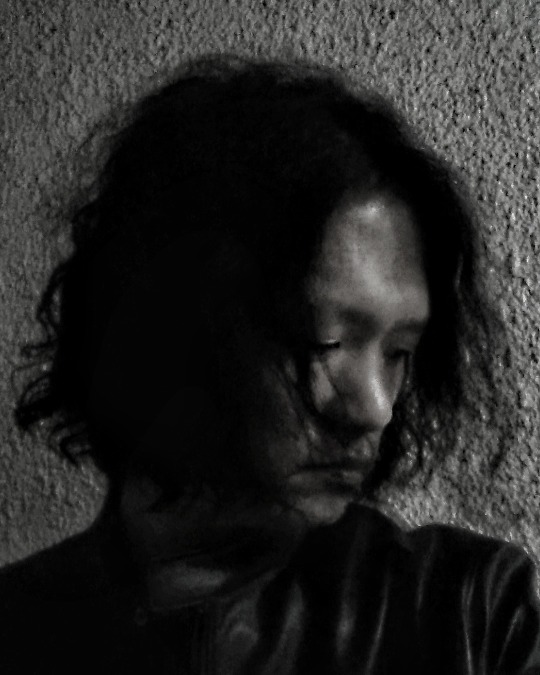
大阪在住レコードレーベルオーナー/プロデューサー/DJ。 レコードレーベル Local Sound Network (LSN)主宰、 Hue Helix 共同オーナー。 レコードレーベルオーナーとしては、 Local Sound Network (LSN)では自身の作品に加え、 Lars Klein, Audio Injection/Truncate, DJ Mika, Deepbass, Obscene Mannequin aka David Foster/Huren/Teste/ O/H/MRTVI/AVM 等の作品やリミックスを発表している。 また、Hue Helixでは、自身の作品をはじめ、 共同オーナーである Go Hiyama, Tomohiko Sagae、Pole Groupの Oscar Mulero の作品等をリリースしている。 プロデューサーとしては、 自身のLocal Sound Network (LSN), HueHelixを筆頭に、 近年ではDax J主宰のMonnom Black, AnD主宰のInner Surface Music, ベルリンを拠点とする モダン・インダストリアル・テクノレーベル Instruments Of Discipline, モダン・ハード・アシッドテクノレーベル3TH Recordsや Carbone Records 等の様々なレーベルから、 約20年に渡り160を超えるタイトルのリリースを 精力的に続ける。 DJとしては2007年にオランダ最大のテクノイベント Awakenings に出演を果たし、 それ以降もオランダ、ドイツ等ヨーロッパでの 出演を続けている。 http://www.ryujitakeuchi.com/ http://soundcloud.com/ryujitakeuchi http://twitter.com/ryujitakeuchi http://www.facebook.com/ryujitakeuchiofficial http://www.residentadvisor.net/dj/ryujitakeuchi http://www.discogs.com/artist/Ryuji+Takeuchi https://www.instagram.com/ryujitakeuchi/
■ ■ ■ ■
DJ まじめ a.k.a NOISECONCRETE
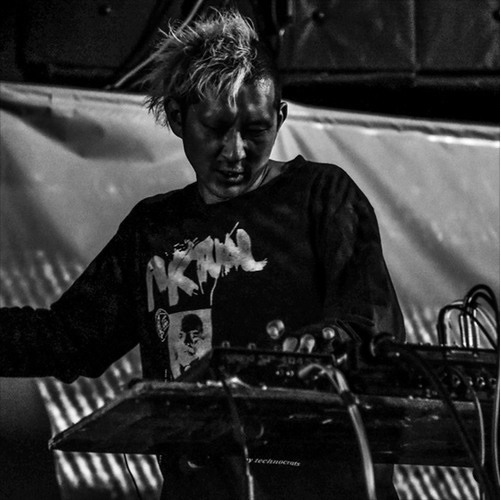
ハーシュノイズ奏者で作曲家のオノジュンジによる ソロマシンライブセット。 NOISECONCRETE、Junji Ono名義の楽曲を サンプリングとハーシュノイズで演奏。 https://soundcloud.com/user-787731464
■ ■ ■ ■
The Bad DJ(Unusual Way/破壊硬戦)
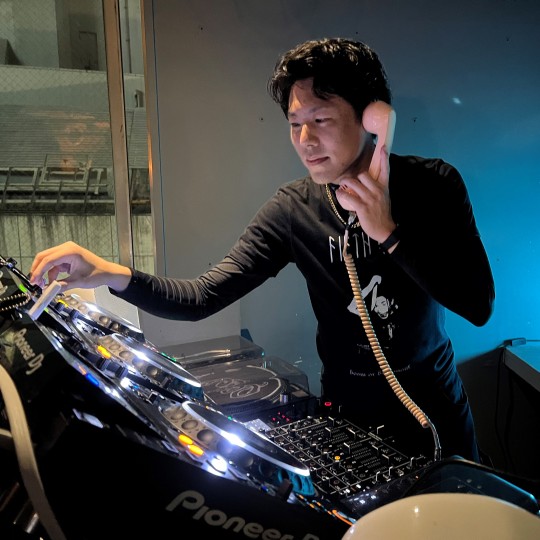
2011年より活動を開始。 無機質粗暴暗黒音楽を得意とし、 ジャンルや場所に囚われない 変幻自在の組み合わせを聞かせる。 多種多様な見聞と技量を以てレジデントDJからVJ、 楽曲製作など 裏からシーンを支える存在として活躍する。 選曲のキーワードは 「ガバキック���「ブレイクス」「ドローンサウンド」だ。
■ ■ ■ ■
Miqu

2020年名古屋市を拠点にDJとして活動を開始。 スローテンポな選曲を得意とする彼女のDJは Deep Technoを軸としてDancehallや Electronicaを織り交ぜて構築される。 レーベル/DJコレクティブ "NEUMA"クルー。 club GOODWEATHERにて、 テクノパーティシリーズ"MANA"を開催。 Twitter: https://twitter.com/miquchan Instagram: https://www.instagram.com/bbblack.ji/ Soundcloud: https://soundcloud.com/miqu-neuma
■ ■ ■ ■
lEjEwO
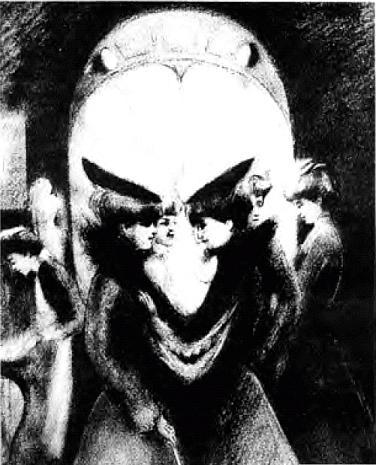
名古屋のIndustrial Musicを軸としたイベント “faktoria”のオリジナルメンバー。 近年は東欧~ロシア、辺境地区周辺の Post Punk,Synth Punk,EBM,Raw Technoを得意としている。 Note: https://note.com/lejewo
■ ■ ■ ■
Gutenberg (ant-zen,faktoria)
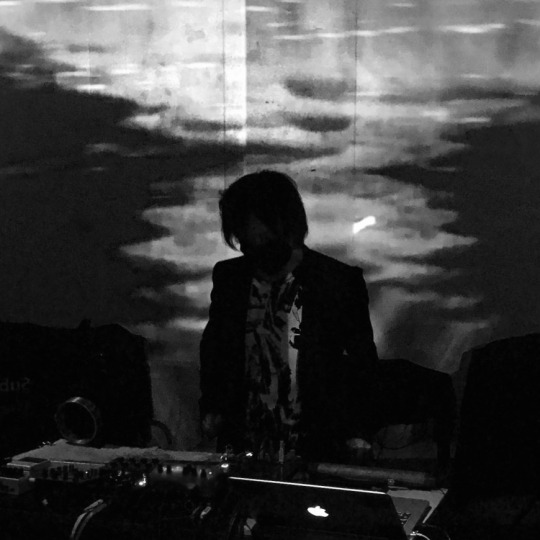
名古屋にてインダストリアルミュージック軸の音楽レーベル 『faktoria』を主宰する会長桜井が2002年より開始した テクノ/インダストリアルソロプロジェクト。 自身のレーベル他ドイツの”ant-zen”より フルアルバム2作品を デジタルリリースしている。
https://soundcloud.com/gutenbergks https://faktoria.bandcamp.com/ https://www.facebook.com/gutenbergshoujisakurai
■ ■ ■ ■
Yum
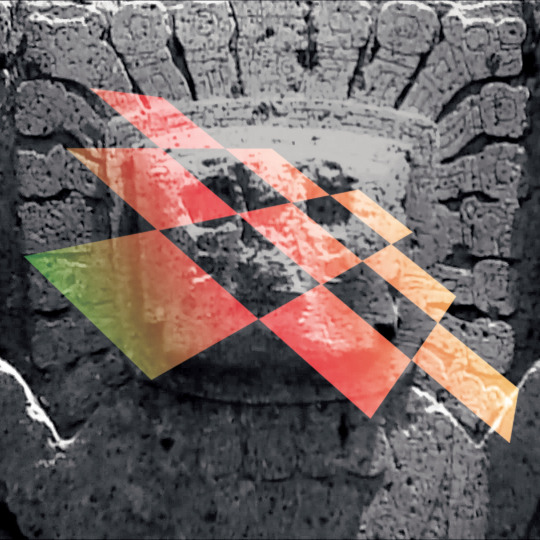
Twitter: https://twitter.com/Dead_Bambi https://twitter.com/0ut5ise Instagram: https://www.instagram.com/shinsukeyamada/
1 note
·
View note
Video
youtube
Tomohiko Sagae - Hyperarousal 2017
3 notes
·
View notes
Text
Weekend Edition: Translations
Translated editions are wonderful for those of us who are not fluent in the original languages of books on our to-read lists. They give us access to stories written in other parts of the world or a glimpse into other cultures. Below are some translated works you can find right here are OCL. If you are participating in the Reading Challenge, you can also fill in your ‘Translations’ space with a book you’ve read in a non-English language, or a book translated into a language you are more comfortable with than English. It’s up to you!

Death Is Hard Work by Khaled Khalifa ; translated from the Arabic by Leri Price A dogged, absurd quest through the nightmare of the Syrian civil war Khaled Khalifa's Death Is Hard Work is the new novel from the greatest chronicler of Syria's ongoing and catastrophic civil war: a tale of three ordinary people facing down the stuff of nightmares armed with little more than simple determination. Abdel Latif, an old man from the Aleppo region, dies peacefully in a hospital bed in Damascus. His final wish, conveyed to his youngest son, Bolbol, is to be buried in the family plot in their ancestral village of Anabiya. Though Abdel was hardly an ideal father, and though Bolbol is estranged from his siblings, this conscientious son persuades his older brother Hussein and his sister Fatima to accompany him and the body to Anabiya, which is--after all--only a two-hour drive from Damascus. There's only one problem: Their country is a war zone. With the landscape of their childhood now a labyrinth of competing armies whose actions are at once arbitrary and lethal, the siblings' decision to set aside their differences and honor their father's request quickly balloons from a minor commitment into an epic and life-threatening quest. Syria, however, is no longer a place for heroes, and the decisions the family must make along the way--as they find themselves captured and recaptured, interrogated, imprisoned, and bombed--will prove to have enormous consequences for all of them. Moonstone: The Boy Who Never Was by Sjón ; translated from the Icelandic by Victoria Cribb Reykjavik, 1918. The eruptions of the Katla volcano darken the sky night and day. Yet despite the natural disaster, the shortage of coal and the Great War still raging in the outside world, life in the small capital goes on as always. Sixteen-year-old Mani Steinn lives for the movies. Awake, he lives on the fringes of society. Asleep, he dreams in pictures, the threads of his own life weaving through the tapestry of the films he loves. When the Spanish flu epidemic comes ashore, killing hundreds of townspeople and forcing thousands to their sick beds, the shadows that linger at the edges of existence grow darker and Mani is forced to re-evaluate both the society around him and his role in it. Evoking the moment when Iceland's saga culture met the new narrative form of the cinema and when the isolated island became swept up in global events, this is the story of a misfit transformed by his experiences in a world where life and death, reality and imagination, secrets and revelations jostle for dominance Note"a novel" -- book jacket Please Look After Mom: A Novel by Kyung-sook Shin ; translated from the Korean by Chi-Young Kim A million-plus-copy best seller in Korea--a magnificent English-language debut poised to become an international sensation--this is the stunning, deeply moving story of a family's search for their mother, who goes missing one afternoon amid the crowds of the Seoul Station subway. Told through the piercing voices and urgent perspectives of a daughter, son, husband, and mother, Please Look After Mom is at once an authentic picture of contemporary life in Korea and a universal story of family love. You will never think of your mother the same way again after you read this book. With My Dog-Eyes by Hilda Hilst ; translation from the Portuguese and introduction by Adam Morris Something has changed in Amos Keres, a university mathematics professor - his sentences trail off in class, he is disgusted by the sight of his wife and son, and he longs to flee the comfortable bourgeois life he finds himself a part of. Most difficult of all are his struggles to express what has happened to him, for a man more accustomed to numbers than words. He calls it 'the clearcut unhoped-for,' and it's a vision that will drive him to madness and, eventually, death. Zuleikha by Guzel Yakhina ; translated from the Russian by Lisa C. Hayden The year is 1930. In a small Tartar village, a woman named Zuleikha watches as her husband is murdered by communists. Zuleikha herself is sent into exile, enduring a horrendous train journey to a remote spot on the Angara River in Siberia. Conditions in the camp are tough, and many of her group do not survive the first difficult winter. As she gets to know her companions - including a rather dotty doctor, an artist who paints on the sly, and Ignatov, her husband's killer - Zuleikha begins to build a new life that is far removed from the one she left behind. Guzel Yakhina's outstanding debut has been showered with prizes and is capturing the hearts of readers all over the world.
Killing Commendatore : A Novel by Haruki Murakami ; translated from the Japanese by Philip Gabriel and Ted Goossen The epic new novel from the internationally acclaimed and best-selling author of 1Q84 In Killing Commendatore, a thirty-something portrait painter in Tokyo is abandoned by his wife and finds himself holed up in the mountain home of a famous artist, Tomohiko Amada. When he discovers a previously unseen painting in the attic, he unintentionally opens a circle of mysterious circumstances. To close it, he must complete a journey that involves a mysterious ringing bell, a two-foot-high physical manifestation of an Idea, a dapper businessman who lives across the valley, a precocious thirteen-year-old girl, a Nazi assassination attempt during World War II in Vienna, a pit in the woods behind the artist's home, and an underworld haunted by Double Metaphors. A tour de force of love and loneliness, war and art--as well as a loving homage to The Great Gatsby -- Killing Commendatore is a stunning work of imagination from one of our greatest writers.
#oberlin college#oberlin college libraries#ocl reads#ocl reading challenge#weekend edition#reading challenge#translations#boom recommendations
6 notes
·
View notes
Text
Dynit, le uscite home video di giugno
L’edizione italiana di Promare arriva finalmente in DVD e Blu-ray!

Di seguito trovate tutte le nuove uscite home video targate Dynit che saranno disponibili nei vari store dal 24 giugno (la data è slittata, quella originale era fissata per il 27 maggio).
PROMARE (Edizione First Press)

Primo prorompente film d’animazione originale prodotto da Studio Trigger (SSSS.Gridman, Little Witch Academia) in collaborazione con SANZIGEN (Bubuki Buranki, BanG Dream 3d season), che si è occupata delle parti in computer grafica.
L’opera torna ad unire il regista Hiroyuki Imaishi e lo sceneggiatore Kazuki Nakashima, due nomi che ben conosciuti grazie a serie di culto come “Sfondamento dei cieli Gurren Lagann” e “Kill La Kill”. Al design invece troviamo Shigeto Koyama, illustratore da sempre immerso nell’animazione robotica, che ha concepito il mechanical design di serie come “Eureka Seven”, “Star Driver” e “Darling in the Franxxx”. Le musiche sono ancora un volta composte da Hiroyuki Sawano (Kill La Kill, Mobile Suit Gundam Unicorn, L'Attacco dei Giganti), mentre i due brani usati come tema musicale, intitolati “Kakusei” e “Koori ni Tojikomete”, sono ad opera della rock band Superfly.
Sono trascorsi trenta anni dall'apparizione dei Burnish, una razza di esseri mutanti armati di fiamma, che ha distrutto metà del mondo grazie al fuoco. Quando appare un nuovo gruppo di mutanti che si fanno chiamare Mad Burnish, ha inizio l'epica battaglia tra Galo Thymos, un nuovo membro della squadra di salvataggio anti-Burnish detta Burning Rescue e Lio Fotia, il leader dei Mad Burnish.
Specifiche:
VIDEO: MPEG4-AVC / 1080P / 23,98fps / 1,78:1
AUDIO: ITALIANO DTS-HD Master Audio 5.1 ch - GIAPPONESE DTS-HD Master Audio 5.1 ch
SOTTOTITOLI: Italiano
Extra:
Booklet 32 pagine con interviste e schede personaggi.
Special Card
Poster
Cortometraggi prequel “Galo-hen” e “Lio-hen” (10 min. cad)
Trailer cinematografici
D-trailers
Prezzo: BLU-RAY 29,99 € / DVD 24,99 €
youtube
FATE/STAY NIGHT: HEAVEN’S FEEL - 1. PRESAGE FLOWER (Edizione Standard)
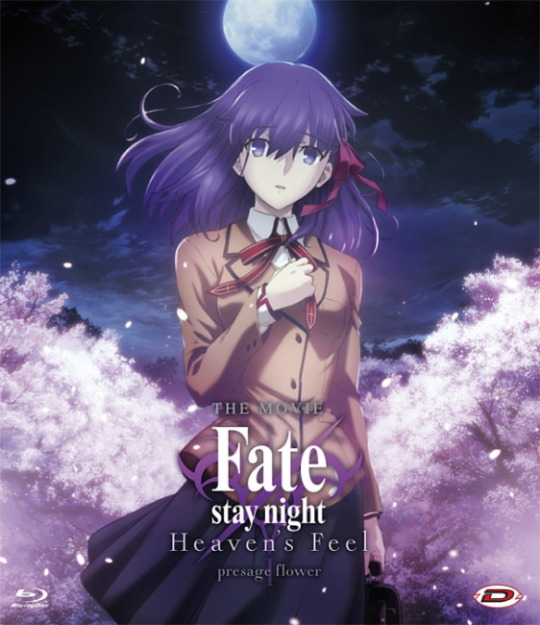
Primo capitolo della trilogia cinematografica dedicata da ufotable (Demon Slayer, Fate/stay night: Unlimited Blade Works) all’epica e drammatica saga di Fate/Stay Night.
La pellicola, diretta da Tomonori Sudou (Kara no Kyoukai), mette in scena il prologo della terza route possibile presente nell’originale visual novel concepita da Kinoko Nasu, illustrata da Takashi Takeuchi e pubblicata Type-Moon. Le vicende partono quindi dagli stessi presupposti di Unlimited Bladeworks, ma si focalizzano sul personaggio di Sakura portando a degli sviluppi (e a delle rivelazioni) molto diversi.
Il ragazzo desiderava proteggere la ragazza. Era quello il suo intento. A distanza di soli 10 anni dalla precedente Guerra del Santo Graal – una battaglia condotta da maghi (Master) e Spiriti Eroici (Servant) al solo scopo di ottenere il leggendario calice onnipotente in grado di realizzare ogni desiderio – una nuova guerra incombe sulla città di Fuyuki. Emiya Shirou, figlio adottivo di Emiya Kiritsugu che partecipò alla precedente Guerra, ha deciso di combattere per realizzare l’ideale del defunto padre. Insieme a Saber, il Servant da lui evocato, Shirou forma un’alleanza con Tohsaka Rin e prende parte alla Guerra del Santo Graal. Ma la battaglia inizierà a degenerare non appena strategie segrete verranno messe in atto da forze invisibili.
Specifiche:
VIDEO: MPEG4-AVC / 1080p / 1,78:1 / BD50G
AUDIO: Italiano DTS-HD Master Audio 5.1ch - GIAPPONESE DTS-HD Master Audio 2.0ch
SOTTOTITOLI: Italiano
Prezzo: BLU-RAY 29,99 €
youtube
CITY HUNTER - PRIVATE EYES (Edizione Standard)
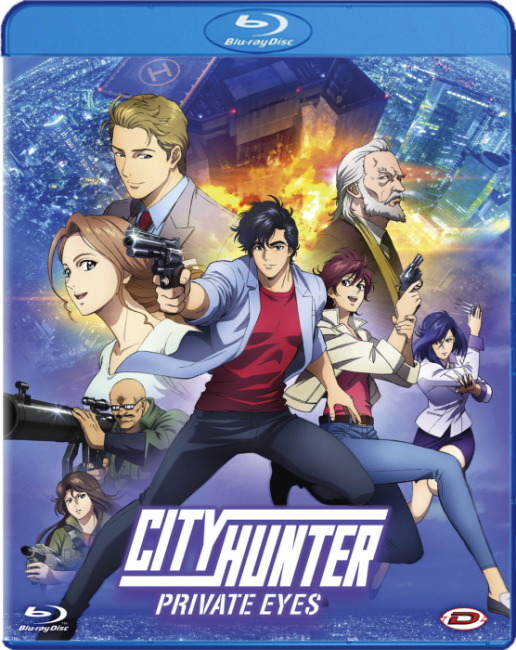
Film d’animazione realizzato per celebrare il 30° anniversario dell’amatissima serie tv anni ‘90 tratta dal popolare manga di Tsukasa Hojo, edito nel nostro paese da Planet Manga. La storia, tutta nuova, è ambientata nella Shinjuku dei giorni nostri e oltre a riportare sul grande schermo Ryo Saeba e soci, il lungometraggio introduce sia personaggi inediti che vecchie conoscenze, fra le quali anche le tre sorelle di “Occhi di Gatto”, un’altra famosa opera di Hojo.
A dirigere la pellicola presso lo studio Sunrise è nuovamente Kenji Kodama (regista da sempre legato al franchise), mentre la sceneggiatura è stata curata da Youichi Katou (Youkai Watch). Così come nell’edizione giapponese, anche in Italia sono stati ingaggiati i doppiatori storici della seria animata e torna anche la sigla “GET WILD” dei TM Network, cantata per l’occasione da Stefano Bersola nella sua versione italiana.
Ryo Saeba è un investigatore privato con sede nel quartier Shinjuku di Tokyo. Oltre ad essere piuttosto in gamba e ad avere una mira infallibile, ha un’ossessione esagerata per il sesso opposto. Lui e la sua collega Kaori spesso fanno da guardie del corpo e svolgono anche altri compiti per chi richiede i loro servizi. La loro ultima cliente è una modella, Ai Shindo, che è stata attaccata da persone misteriose, e che inconsapevolmente è in possesso di una strana “chiave”, fondamentale per una cospirazione che coinvolge l’intera città. Riuscirà Ryo a proteggere Ai e a salvare la città?
Specifiche:
VIDEO: MPEG4-AVC / 1080p / 1,78:1 / 23.98fps
AUDIO: Italiano DTS-HD Master Audio 5.1ch - GIAPPONESE DTS-HD Master Audio 5.1ch
SOTTOTITOLI: Italiano
Prezzo: BLU-RAY 24,99 €
youtube
SWORD ART ONLINE II (Edizione Standard)

Seconda stagione della serie tv tratta dalla popolare light novel di Reiki Kawahara, edita in Italia da J-POP, che nei suoi 24 episodi copre gli archi narrativi Phantom Bullet, Mother's Rosario e Calibur, raccontati dal 5° all’8° volume dell’opera.
A dirigerla, sempre presso gli studi A-1 Pictures (Wotakoi: L'amore è complicato per gli otaku, Kaguya-sama: Love is War), è Tomohiko Ito (Hello World, Erased).
Dopo un anno, Kirito viene contattato da Kikuoka, un funzionario governativo, che gli chiede di investigare su un incidente avvenuto in un nuovo VRMMO, chiamato Gun Gale Online. Un giocatore, ucciso nel gioco da un misterioso avatar armato di una pistola nera, muore anche nel mondo reale. Kirito, anche se non del tutto convinto che il mondo virtuale possa influenzare fisicamente il mondo reale, decide di accedere a GGO, ma si troverà ancora una volta a lottare per sopravvivere.
Specifiche:
VIDEO: MPEG4-AVC / 1080P / 1,78:1
AUDIO: Italiano DTS-HD Master Audio 5.1 - Giapponese DTS-HD Master Audio 2.0
SOTTOTITOLI: Italiano
Prezzo: BLU-RAY 44,99 €
youtube
Autore: SilenziO))) (@s1lenzi0)
#sao#sword art online#promare#city hunter#fate stay night#anime#home video#dvd#blu-ray#dynit#terminal video#film#serie tv#newsintheshell#news in the shell#cartoni animati#animazione#city hunter private eyes#heaven's feel#presage flower
1 note
·
View note
Video
youtube
tomohiko sagae -- pile driver #1
1 note
·
View note
Text

If you went raving in Belgium in the late noughties early eurm tenies you've probably once heard Cthulhu play on a party!
I was pleasantly surprised when he invited me to partake in his 26 Mixes for No Cash series. And here is my contribution to the series, can't say it was easy, crafting a set with such strict boundaries but I'm happy with the endresult! Expect #electro and #techno with a pinch of #acid.
Original artwork: Stock photo of ancient bronze coins
If you want more The Kult of O content consider subscribing to the Patreon and support us while you do:
http://www.patreon.com/oneirich
Bytecon - 100 Percent Pure Adrenalin Bombardier - Rise of the Machines Roadking - Electric Codex Empire - Mental Recession Rommek - Twisted Conscience Uun - Temporal Body Somatic Responses - A Return To Malignant Earth (Tomohiko Sagae Stomp Mix) Rory St John - Suicidechain Ayarcana - Conflict Draag - Detox Exsiderurgica - Red Stripe Vlaysin - Rising Anger (Ayarcana Remix) Asche - Riding on the Atomic I.C.E. Monolith - satanic ritual abuse Architect - Csa ONTAL - Solidification KAS:ST - Raving Alone (Codex Empire Remix) 6SISS - Psalm Of Consummation Casper Hastings - Killa (Sancta Sanctorum Remix) Kuetzal - Acid 5 (Leafeater Remix) Datasmok - 2 Delta Files - Naufrage.dlt AXKAN - Berlin Arnoid - Tonal Violence Luz1e - Electronic Warefare P.E.A.R.L. - Life of Pleasures
https://www.thekultofo.com/26-mixes-for-no-cash/
1 note
·
View note
Text
faktoria Podcast#15 Mixed By Shouji Sakurai (Gutenberg)

Techno,Hard Techno,Industrial... https://www.mixcloud.com/faktoria_gutenberg_tpkaichou/faktoria-podcast15-mixed-by-shouji-sakurai-gutenberg/ ■ ■ ■ 1. synapscape / i can't kill what you see (ant-zen) 00:00 https://ant-zen.bandcamp.com/album/a-mutual-disagreement 2. Gutenberg / Change The Season (Rework 2021) (faktoria) 04:03 https://faktoria.bandcamp.com/album/arc-4-rework-of-early-works-pt-1 3. Distra / Modulator (Taro Records) 08:38 https://tarorecords.bandcamp.com/album/tar35 4. roger rotor / maniac monger (ant-zen) 13:30 https://ant-zen.bandcamp.com/album/sightseeing-bizarre 5. Dominik Müller / Demut (Furanum Records) 18:37 https://furanumrecords.bandcamp.com/album/fu020-the-other-colours-of-poison 6. Planetary Assault Systems / Bang Wap (Token Records) 22:50 https://planetary-assault-systems.bandcamp.com/album/sky-scraping 7. Tumult / Dull Throb (Still Distant Records) 25:40 https://stilldistantrecords.bandcamp.com/album/sdr-va-vol-1-year-anniversary 8. Kenny Campbell / Control the Night (Drøne) 29:08 https://dronemcr.bandcamp.com/album/blackest-ever-buckfast-2 9. Monya / Salted eyes (Dissonanze Recordings) 32:22 https://dissonanzerecordings.bandcamp.com/album/voices-from-isolation-ii 10. Strobo.Lolita / Instabiles Bild (HANDS) 34:38 https://strobololita.bandcamp.com/album/hysteria 11. Burden / Circuit Bender (House of Reptile Records) 38:39 https://houseofreptile.bandcamp.com/album/sublime-creatures-vol-i 12. Gutenberg / **** 42:48 13. Tomohiko Sagae / Pile driver #2 (FLUX Musical Art) 47:07 https://fluxmusicalart.bandcamp.com/album/noise-ausstellung 14. OGMAH / Despite Slavery (Rorganic Remix) (HOME MORT) 50:37 https://homemort.bandcamp.com/album/despite-slavery-hmx004 15. Exium / Erosion 1 (mord) 53:29 https://mord.bandcamp.com/album/surface-erosion-ep 16. Gutenberg / Dice Ambient (Rework 2022) (faktoria) 56:32 https://faktoria.bandcamp.com/album/arc-4-rework-of-early-works-pt-1 17. moctan / long distance runner (ant-zen) 01:00:11 https://ant-zen.bandcamp.com/album/come-closer 18. Somatic Responses / Zapper (RIOT Radio Records) 01:04:13 https://riotradiorecords.bandcamp.com/album/assault 19. Explain / Inferiority complex (Gutenberg Remix) (U.G.JAMMIX) 01:08:13 https://ugjammix2.bandcamp.com/album/green-ep 20. distortion six / gaushe (gaahl) (ant-zen) 01:13:40 https://ant-zen.bandcamp.com/album/skade ■ ■ ■ enjoy it!
0 notes
Audio
Listen/purchase: DEVOTION TO PLEASURE by Years Of Denial, Tomohiko Sagae, QUAL, Filmmaker, Common Poetry, Ngthly
0 notes
Photo

tomohiko Sagae
3 notes
·
View notes
Photo

2017/09/23 (Sat.) 14:00 - 20:00 秋葉原重工 - Akihabara Heavy Industry Inc. #20 ■Entrance Door 3,000 JPY / 1d w/f 2,500 JPY / 1d ■Guest Live: Tomohiko Sagae ( Rodz-Konez / HueHelix / HANDS ) ■Guest DJ: TAKAMI ( REBOOT / BUZZ×3 ) ■Resident DJ & Live: wat ( Body Inform ) KURAYAMI Atsushi Ohara ( LINEAR ) Takayuki Kamiya ( プロジェクト魔Q / 5 Invitations ) ■Resident VJs: 12d ( FIVE DOT ONE ) akirafukuoka ( Raw-Fi ) carmine ( clocknote. / technoA / Diverse System ) KAZUMiX & PePcoMiX ( 1st-impact ) ■1F Lounge “秋葉原住宅 #7” REV-TUNE ( Back 2 Bellforest / たてあに / Techno Alliance ) KAGAWA DAICHI Junichi Funada risanova Hideo “spinn” Teramoto ( Akihabara Housing, Ltd. ) Hiroshi Okubo ( nanosounds.jp ) ■Photographer: sioyoshi
Tomohiko Sagae ( Rodz-Konez / HueHelix / HANDS ) Dark, Industrial and Dangerous. https://www.youtube.com/watch?v=YurB_jiSXn8 https://www.youtube.com/watch?v=jnQYhUb-Amg TAKAMI ( REBOOT / BUZZ×3 ) 1995年からDJを始め、現在は「REBOOT@SankeysTYO(代官山)」、「BUZZ×3@R LOUNGE(渋谷)」のレジデントDJとして活躍中。また、ネオ・モダンなテクノパーティー「ハイライト(hi-lite)@神宮前GALAXY」を主宰。他、2012年6月より日本初のダンス専門インターネットラジオblock.fmにて「radio REBOOT」(毎週火曜日 24:00~)をレギュラー担当。 東京を拠点にテクノやハウスなどの、ジャンルを問わず国内各所や香港など様々なパーティーでゲストプレイし意欲的な活動を行っており、THE ADVENT、CRISTIAN SMITH、HARDFLOOR、MARCO BAILEY、FILTER HEADS,CRISTIAN VARELA、SIAN、TOMEHADESなど来日時にも共演し、「TECHNO」を基本とし4 DEAKSを駆使した独自のファンキーな選曲と安定感のあるプレイスタイルは、幅広いオーディエンスやDJの間で評価が高い。 また、ロック&クラブマガジン「LOUD」によるDJ人気投票「DJ 50/50」にも、2006年より連続ランクインを果たし、その根強い人気高さが伺える。 2002年9月には自身、MOON AGE RECORDINGSから初リリースとなった「AGAINST THE OVERDRIVE E.P.」はQ'HEY、DJ SHUFFLEMASTER、YAMA、DJ UIROHなどから高い評価を受けた他、ドイツのクラブ誌「raveline」では5つ★の評価を得て話題を呼んだ。数多くのトラックをリリースし、その楽曲のオリジナリティーの高さからリミキサーとしても作品を提供している。 http://www.takami.info http://www.facebook.com/takami.info http://twitter.com/djtakami http://www.mixcloud.com/djtakami/ http://block.fm/program/reboot/ REV-TUNE ( Back 2 Bellforest / たてあに / Techno Alliance ) 幼少期、インストミュージック、店内BGMなど、言葉の無い音楽に興味を持ち、ピアノの黒鍵だけ延々叩いて遊んでいたちょっと変わった少年は、中学二年の時、某ロボットゲームをきっかけにテクノという音楽を知った。 2007年10月からハウス/テクノDJを始める。次第に自分の嗜好を絞り込んでいき、BPM139でテクノとゲーム・アニメ曲をおりまぜながらプレイするスタイルに落ち着く。クラブミュージックをフィーチャーしたアニメ、エウレカセブンのファンDJパーティ「Back 2 Bellforest」をオーガナイズしている。 http://back2bellforest.com/ https://twitter.com/REV_TUNE KAGAWA DAICHI 2000年代中盤からDJをスタート。テクノ、ハウスを中心に回している。 『GEKKO NIGHT』で出会った1-K、omae03、ダイ、nobらが開催しているパーティー『GREen』の準レギュラー要員。 元アニメ制作スタッフという変わった経歴の人 Junichi Funada ゲームサウンドデザイナーとして、数多くのタイトルに参加。 DJとしては2005年からキャリアをスタートし、Techno, Houseを軸に活動する。 ダンスミュージックをこよなく愛する、自称ツマミ大好きツマミスト。 最近の悩み【TR-09のツマミが小さくてツマミにくいこと】 https://twitter.com/J_Funada
4 notes
·
View notes